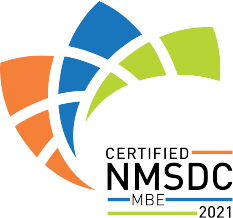
The trinity of product development
Like nearly everything in life, the trinity of product development revolves around three core choices: speed, quality, and price: pick any two. In this article, we’re focusing specifically on price, and if it’s really an option at all.
Price: lowest is rarely best
Applied to our industry, when brands and retailers spend their time and money with fixture packages (cash wraps, shelving, and various types of displays) in new locations, going with the lowest cost is never really a viable option. Brands have a lot to protect: their values, customer base, look, feel, and recognition among other things. Choosing the lowest priced option as the primary value is the fastest way to throw all that good work out the window. Plus, the direct cost of re-work, indirect cost of lost time, and reality of stress and frustration that comes with it, makes you wonder why you even chose to go with someone on price at all.
Redefining the importance of price
So if the lowest price option is out, where do you choose from? This is exactly where design and manufacturing interests intersect. However, typically these two important roles are part of separate teams (ex: architect and builder interest in building a home), and syncing vision and real world costs across a variety of materials and techniques is challenging. The sweet spot, we’ve found, is getting the best possible quality at the most you can afford. Our honest opinion: if you can’t afford to do it right, don’t do it.
So if we can’t afford a fixture package, what do we do?
Renderings, shop drawings, materials, and techniques are quite different from printing – software, education, and general career path to name a few. Compared to printing, these specialized skills are more involved in the design process, and it makes more sense to rely on outside fabricators to manage and develop these assets vs. coming up with your own design only to find that it doesn’t scale due to material availability, special machines required, or time. So, if you have architects on staff, you’d be fine to tackle in-house. If not, best to collaborate and lean on outside suppliers to create the final product.
Design for print and store fixture packages are different languages
The ideal output depends on the right input. Wide format printing and store fixture production have different inputs: software, techniques, suppliers and timelines to name a few. Just like with language, you’ll need someone fluent on your team that speaks each language – and if you’re lucky, someone that speaks both. However, what if you don’t have the resources to do this? The manual way is to lean on your vendors’ knowledge. Ask their sales teams to educate you about your options, and do our own research to validate it. While this can be time consuming, it is very effective. Just be clear about your vendor’s billing policies surrounding design services.
Is it even possible to do anything?
The ideal output depends on the right input. Wide format printing and store fixture production have different inputs: software, techniques, suppliers and timelines to name a few. Just like with language, you’ll need someone fluent on your team that speaks each language – and if you’re lucky, someone that speaks both. However, what if you don’t have the resources to do this? The manual way is to lean on your vendors’ knowledge. Ask their sales teams to educate you about your options, and do our own research to validate it. While this can be time consuming, it is very effective. Just be clear about your vendor’s billing policies surrounding design services.
Jeff Lo is owner of TGS Elevate, a visual marketing / merchandising company that provides printing, point of purchase displays, and store fixture manufacturing, and in-store build outs for companies that have 50-500 locations nationwide.


